Art World
One Year On From the Deadly Beirut Explosion, The City’s Art Scene Continues to Face Challenges
Efforts to rebuild have been marred by economic and political challenges.
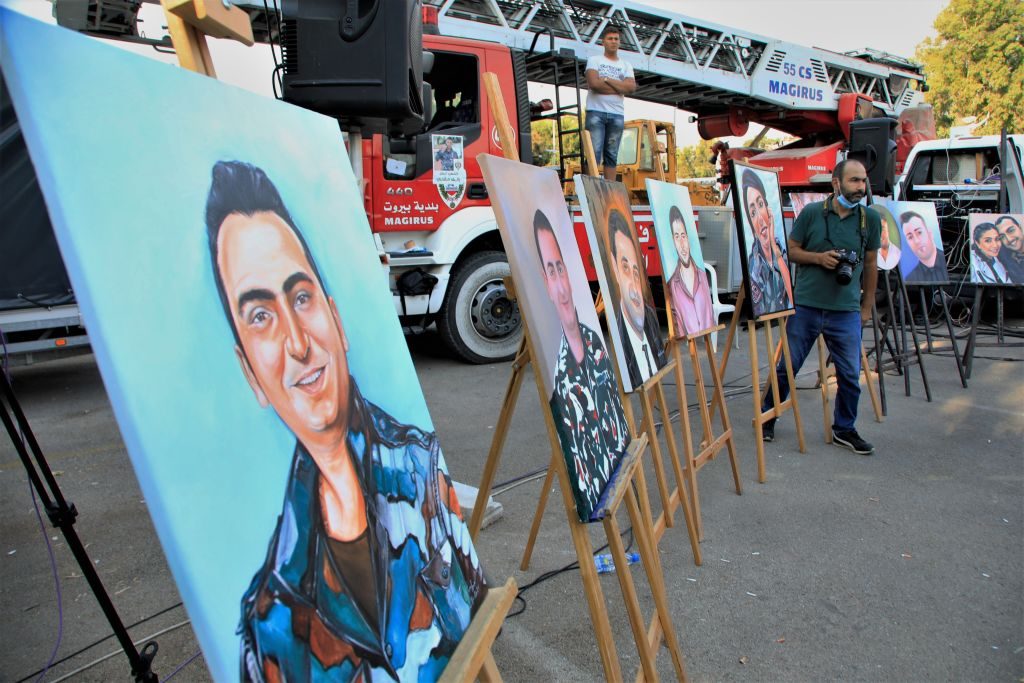
Efforts to rebuild have been marred by economic and political challenges.

Dorian Batycka

On the afternoon of August 4, 2020, a deadly blast in the port of Beirut plunged the city into catastrophe and tragedy. The sudden explosion of 2,700 tons of ammonium nitrate killed 218 people and injured thousands, leveling homes and damaging many of the city’s cultural institutions.
Reconstruction efforts are underway, but several Lebanese organizations remain closed, still in dire need of rebuilding. Many in Lebanon are demanding justice and accountability for the event, and demonstrations are expected to take place on the event’s anniversary today. At the same time, the role of art and culture in the reconstruction process is an important one.
“Cultural heritage contributes to the overall well-being and revival of our community,” said Nadine Panayot, curator and professor at the Archaeological Museum in Beirut. “By fighting the absurdity of what we were going through, we saw in the restoration process how culture has had a profound healing effect.”
International government aid has been funnelled to the Middle Eastern nation, which is known for its rich cultural heritage. Despite the aid, the situation in Beirut remains difficult for the art scene’s revival due to an ongoing economic crisis that has seen the country’s currency plummet by as much as 90 percent, as well as the coronavirus pandemic, which has plagued Lebanon’s notoriously underfunded health care infrastructure. While smaller institutions rebuild, many smaller project spaces and artists continue to struggle.

Lebanese-Polish architects and sisters Tessa and Tara Sakhi’s installation Letters from Beirut at the Venice Architecture Biennale. Photo: Tessa Sakhi.
The Archeological Museum, one of the region’s oldest institutions, suffered extensive damage to its collection during the blast, losing over 70 objects, including several 1st-century B.C. Roman glass vessels. “We lost a lot, but I’m convinced that even the pieces that were lost have a story to tell,” said Panayot.
In immediate aftermath, Lebanon’s directorate general of antiquities enlisted help from the Louvre to begin what it dubbed “emergency interventions.” Inside one of the city’s most iconic institutions, the Nicolas Ibrahim Sursock Museum, located in the port of Beirut, reconstruction efforts supported mostly by European funds have been able to restore the Salon Arabe, a diwan-style room containing ancient wood engravings bespoke with Ottoman embellishments heavily damaged during the blast.
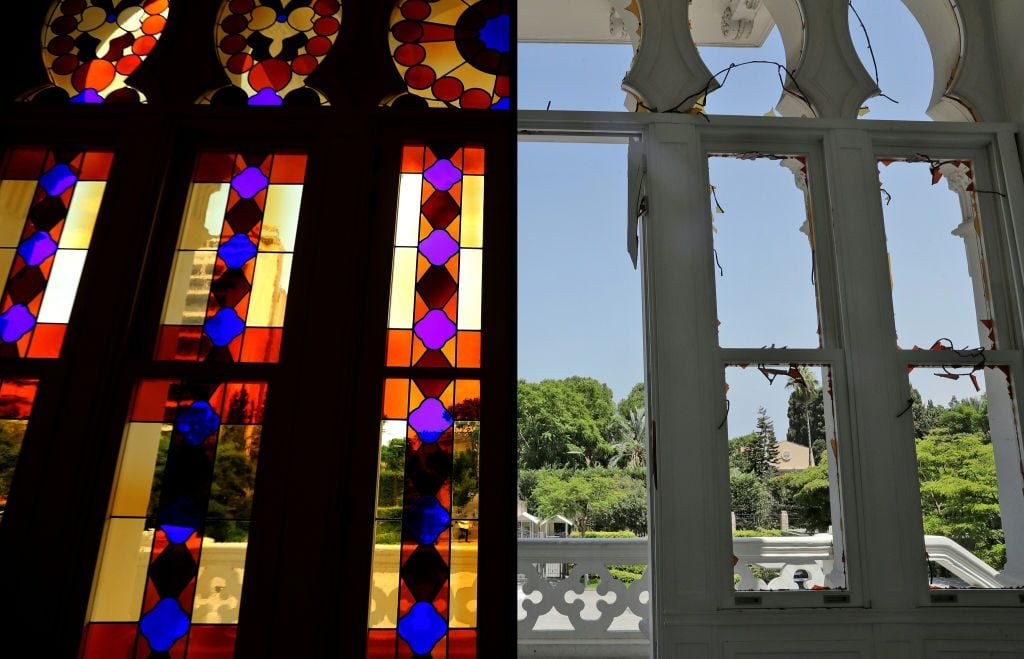
This combination of pictures the stained glass windows at the Sursock Museum before and after the blast at the port of Beirut which ravaged entire neighbourhoods of the city. Photos by Joseph Eid and Anwar Amro /AFP via Getty Images.
“I haven’t seen this room so clean for so long,” Zeina Arida, director of the Sursock, told France24. “For those of us responsible for this museum and its collection, it was very difficult to see this heritage, that belongs to everyone, destroyed and full of dust.”
The costs for the reconstruction of the Sursock Museum came from several European donors, including the Swiss-based International Alliance for the Protection of Heritage in Conflict Areas, often referred to as ALIPH, which covered the cost of a temporary roof that went up immediately after the blast. The Swiss organization supported a total of 18 reconstruction projects in Beirut at a price tag of $2.3 million, providing funds crucial to stabilizing crumbling cultural infrastructure and monuments in the city.
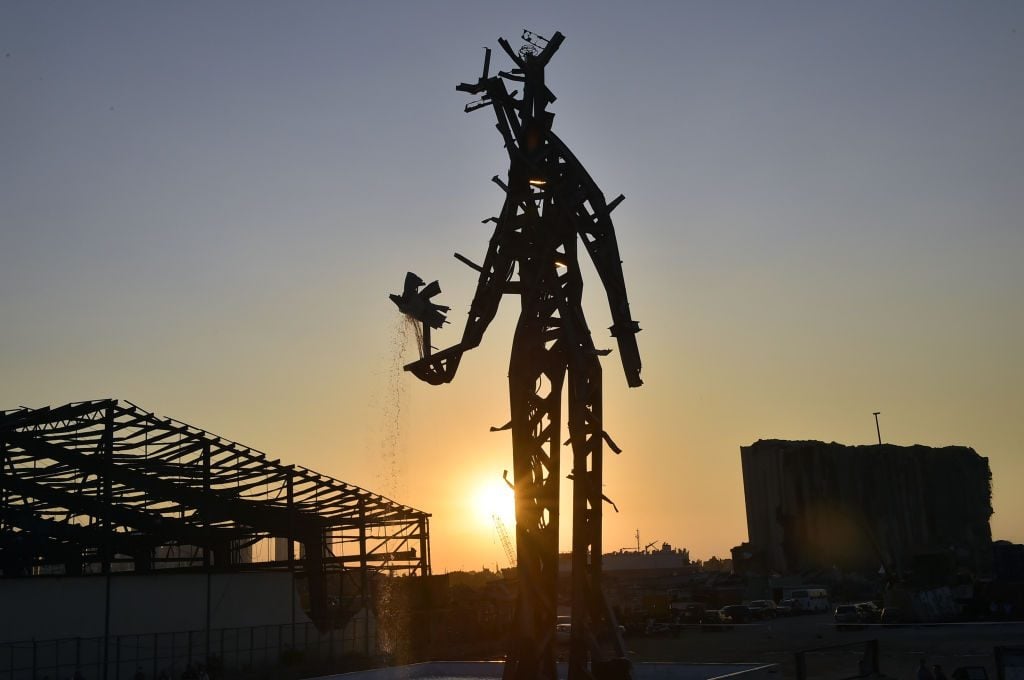
A view of a newsteel sculpture dubbed The Gesture by Lebanese artist Nadim Karam, made from debris resulting from the aftermath of the blast at the port of Lebanon’s capital Beirut. Photo: Houssam Shbaro/Anadolu Agency via Getty Images.
The French Culture Ministry also chipped in, supplying a €500,000 ($592,980) grant for new stained glass work. Paris’s Centre Pompidou covered additional costs and provided expertise for restoring a damaged portrait of Nicolas Sursock by the Dutch-French painter Kees van Dongen, one of 57 artworks in the museum collection that were damaged by the explosion. The Sursock also received a one million Euro grant from the Italian government via UNESCO.
At the Archaeological Museum, the museum immediately restored the building’s doors and windows in order to protect the remaining objects, before turning to outside help in order to preserve and restore what was lost. In the 12 months since the blast, under Panayot’s care and with the help of ALIPH and the French Institut National du Patrimoine, the museum as received crucial equipment and expertise to help restore its precious glass works. To date, 10 ancient vessels have been repaired—while the help has been appreciated, it is far from enough. Panayot told Artnet News that formal expertise and equipment have stalled—with more resources, she said, the institution could be able to restore as many as 25 or more of the 72 destroyed or damaged items.
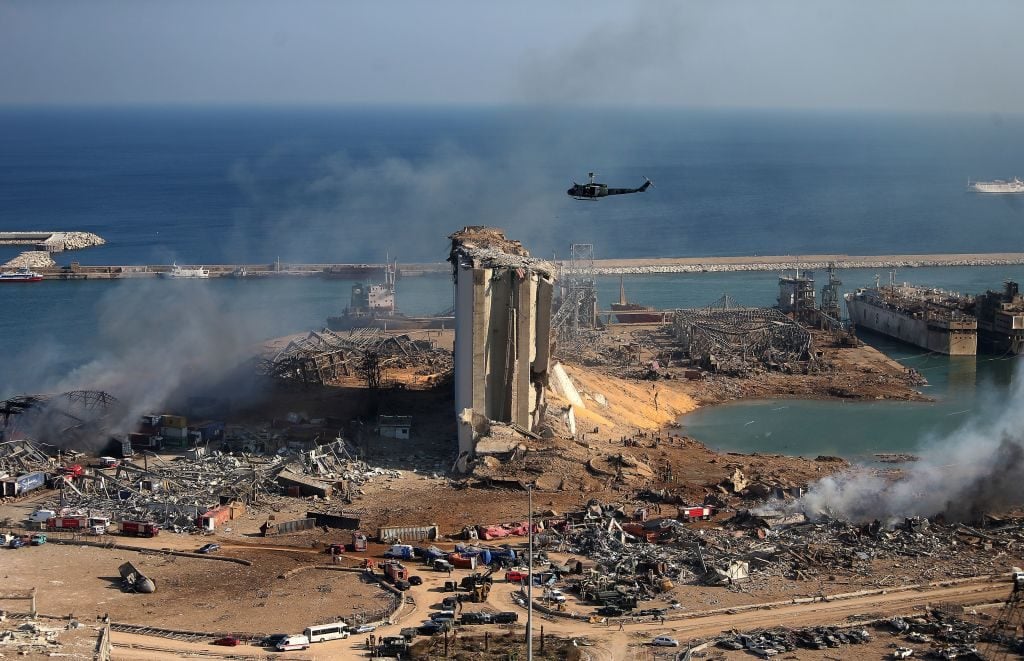
A general view shows the damaged grain silos of Beirut’s harbour and its surroundings on August 5, 2020. Photo by STR/AFP via Getty Images.
While the major museums have restoration underway, difficulties remain, especially for smaller artist-run centers and non-profit galleries who do not have access to international bodies for the protection of cultural heritage.
Ashkal Alwan, a non-profit organization that presents contemporary art, has responded by helping to organize residencies for artists to go abroad. But other spaces in the city, such as Letitia Gallery, closed for good in February after months of economic hardship. Besides the physical destruction, some of the galleries lost staff due to the blast: Firas Dahwish, who worked at Agial Art Gallery and Saleh Barakat Gallery in the west of the city, died from serious injuries five days after the blast.
As for some of the non-profit spaces, the Arab Image Foundation, which contains an important collection of early photographs documenting life in the Middle East and the Levant, and which suffered heavy damage during the explosion, has resumed its public program. So has the Mina Image Center, the Beirut Art Center, and the National Museum, who all received donations from a variety of sources.
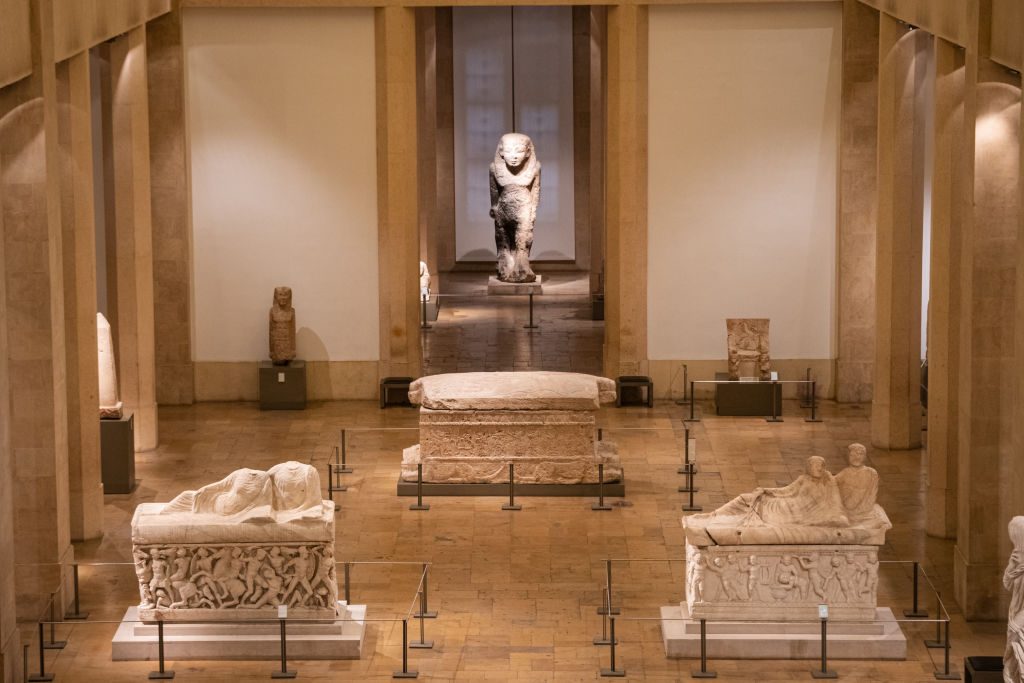
The main corridor of the National Museum of Beirut. Photo by Diego Cupolo/NurPhoto via Getty Images.
In any case, a cultural exodus appears to be happening: those who can leave Lebanon often do. The sister duo Tessa and Tara Sakhi, artists and architects who work under the name T Sakhi left Lebanon days after the blast, but continue to work in public space and take an active approach to reconstruction efforts in Beirut from abroad.
Their latest installation, “Letters from Beirut,” took over 2,000 notes from survivors as material for an installation at this year’s Venice Architecture Biennale. The two say that challenges younger artists face today are increasingly dire, adding that it has become nearly impossible to work or produce works in the country where most do not have the basic necessities for survival, let alone art.
“Many of the local artisans and factories we used to produce our works, such as stone, metal or wicker workshops, now cease to operate,” said Tessa Sakhi.
“It has become nearly impossible to work in the country,” her sister Tara added. “But we persist, we do what we can.”